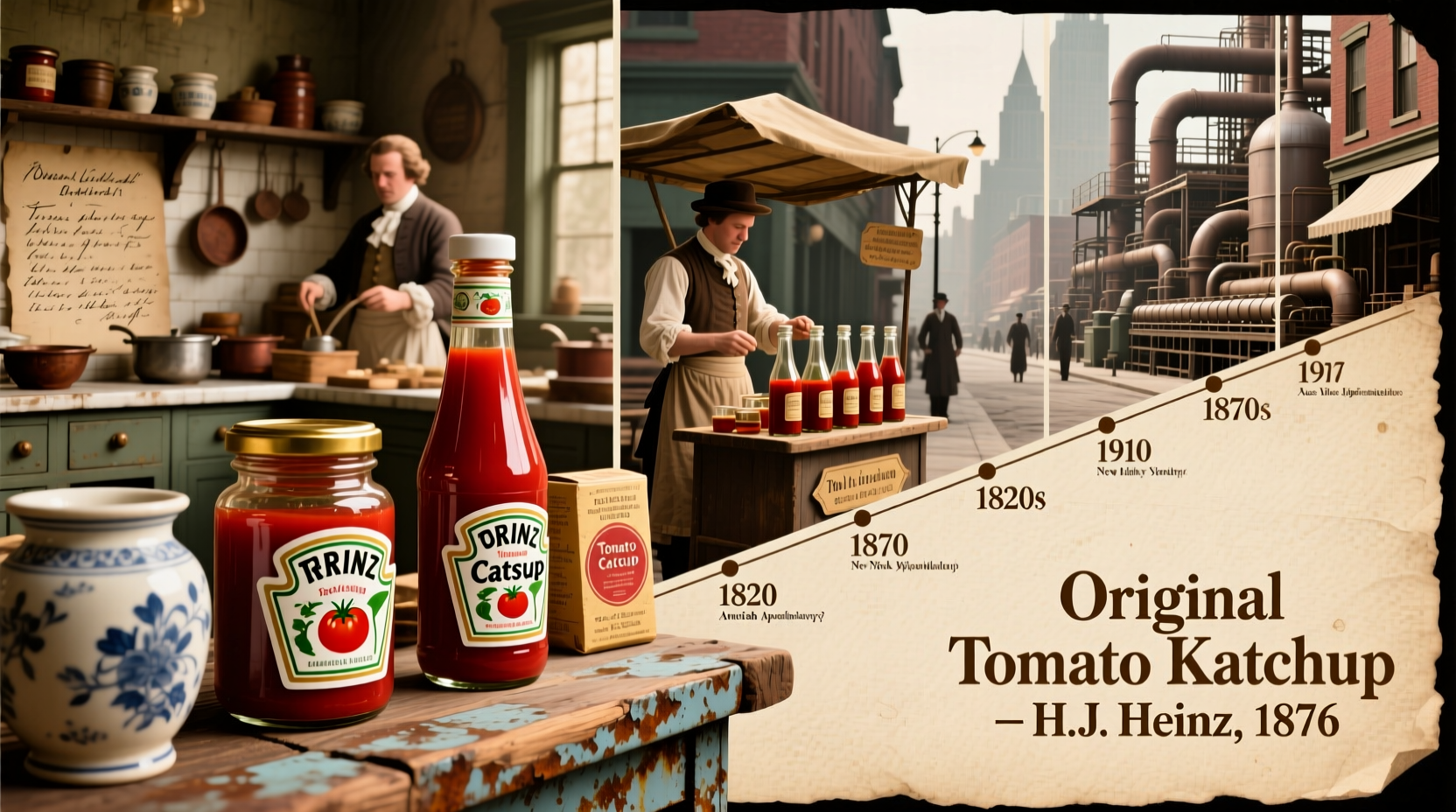Tomato ketchup originated from ancient Chinese fish sauces, not tomatoes. The word "ketchup" derives from the Hokkien Chinese term 'kē-tsiāp' for a fermented fish brine. Tomato-based ketchup didn't emerge until the early 1800s in the United States, with commercial production beginning in 1876 by Henry J. Heinz after dangerous preservatives like formaldehyde were removed from earlier recipes.
The Surprising Journey of Tomato Ketchup: From Fish Sauce to Global Condiment
When you reach for that familiar red bottle at your local diner, you're holding the end product of a culinary evolution spanning three continents and four centuries. Tomato ketchup's history reveals how global trade, food science, and American entrepreneurship transformed an Asian fish sauce into the world's most popular condiment.
From Eastern Seas to Western Tables: The Ketchup Timeline
Understanding ketchup's true origins requires rewinding to 17th century China. Sailors traveling the Spice Route encountered a pungent fish-based sauce called 'kē-tsiāp' in Fujian province. This umami-rich liquid, made from fermented fish and spices, became a prized trade item that eventually reached European kitchens.
| Era | Key Development | Primary Ingredients |
|---|---|---|
| 1600s | Chinese fish sauce 'kē-tsiāp' documented | Fermented fish, brine, spices |
| 1700s | British adaptation as mushroom/walnut ketchup | Mushrooms, walnuts, vinegar |
| Early 1800s | First tomato-based recipes appear in America | Tomatoes, vinegar, spices |
| 1876 | Heinz introduces commercial tomato ketchup | Tomatoes, vinegar, sugar, spices |
| 1906 | Pure Food and Drug Act regulates ketchup production | Standardized tomato content |
The Great Tomato Transformation
British cooks initially adapted the Asian sauce using local ingredients, creating mushroom, walnut, and oyster ketchups popular in 18th century England. These versions bore little resemblance to today's tomato-based condiment. The pivotal shift occurred when American cooks began experimenting with tomatoes in the early 1800s.
According to food historian Andrew F. Smith's research documented in Pure Ketchup: A History of America's National Condiment, the first known tomato ketchup recipe appeared in 1801 in Physiology of Taste by Jean Anthelme Brillat-Savarin. However, early tomato ketchup faced significant challenges - tomatoes were considered poisonous by many Americans until the mid-19th century, and the sauce's natural acidity made preservation difficult.
Early commercial ketchup producers used dangerous preservatives like formaldehyde to extend shelf life. The U.S. Department of Agriculture's 1906 investigation revealed that some brands contained up to 1,000 times the safe formaldehyde levels. This led directly to the Pure Food and Drug Act of 1906, which established standards for ketchup production.

Heinz and the Birth of Modern Ketchup
Henry J. Heinz revolutionized ketchup production in 1876 by eliminating dangerous preservatives and focusing on quality ingredients. His breakthrough came from increasing vinegar content and using ripe tomatoes at peak season. The distinctive Heinz bottle design with its narrow neck wasn't just for branding - it solved the problem of ketchup's thick consistency while controlling portion size.
By 1905, Heinz had perfected his recipe with the optimal balance of tomato solids (not less than 14%), vinegar, sugar, and spices. This formula became the industry standard after the FDA established minimum requirements in 1935. The shift from natural fermentation to vinegar-based preservation transformed ketchup from a seasonal specialty to a year-round staple.
Global Spread and Cultural Adaptation
Ketchup's journey from American kitchens to global dominance reveals fascinating cultural adaptations. In Japan, "tomato ketchup" became a base for tonkatsu sauce. In the Philippines, banana ketchup emerged during World War II tomato shortages. Sweden developed its unique "ketchup" that's closer to American cocktail sauce.
According to Smithsonian Institution food history archives, ketchup's global spread accelerated after World War II when American troops introduced it worldwide. The condiment's versatility - functioning as both seasoning and sauce - helped it integrate into diverse culinary traditions while maintaining its essential identity.
Modern Ketchup: Tradition Meets Innovation
Today's ketchup market balances tradition with innovation. While classic tomato ketchup remains dominant, specialty varieties have emerged including organic, low-sugar, and heirloom tomato versions. Food scientists continue studying ketchup's unique rheological properties - its ability to remain stable yet flow when squeezed has made it a subject of ongoing research in food physics.
The story of tomato ketchup demonstrates how food traditions evolve through cultural exchange. What began as a Chinese fish sauce transformed through British adaptation, American innovation, and global integration to become the ubiquitous condiment we know today - a testament to humanity's shared culinary journey.











 浙公网安备
33010002000092号
浙公网安备
33010002000092号 浙B2-20120091-4
浙B2-20120091-4